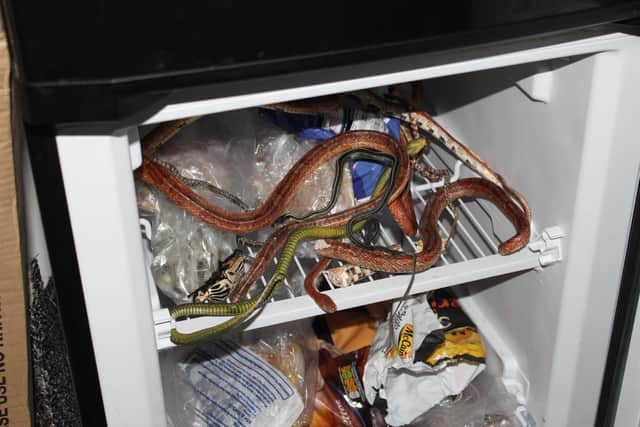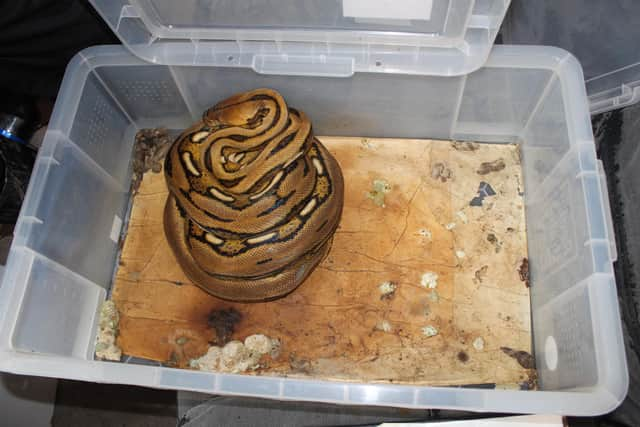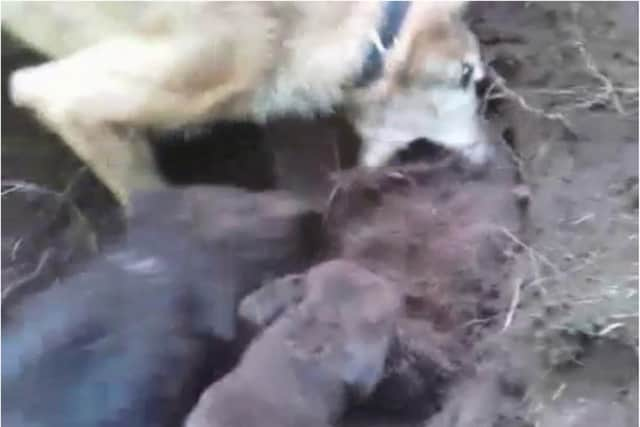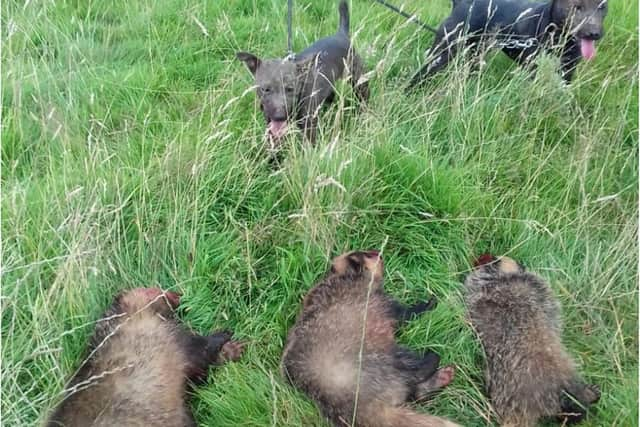SSPCA undercover inspector who helps keep Edinburgh's animals safe speaks openly about worst ever cases
“These animals have gone through extreme cruelty for nothing more than human vanity,” said Jerry*.
Jerry isn’t his real name.
Jerry is an undercover inspector for the Scottish Society for the Prevention of Cruelty to Animals (SSPCA) and we have protected his identity so that he can talk openly about the horrific acts of animal torture and neglect that he sees across Scotland every day.
Advertisement
Hide AdAdvertisement
Hide Ad

With a background in the police force, working in organised crime in both Scotland and London, Jerry leads a team of officers - some of whom are, like him, former police officers, some are ex-military and some are former prison officers - who work to prevent and punish animal cruelty for Scotland’s leading animal charity.
“Most people don’t even know we exist,” laughs Jerry. “They just think that the SSPCA are the ones that turn up in a van and collect injured animals.”
In reality, the SSPCA runs a large amount of in-depth investigations into, among other things, the puppy trade – the intensive breeding of dogs for profit – as well as dog fighting and badger baiting, which is still rife across the country.
Jerry explains: “Badger baiting has been banned since 1835.


“Today, it is a huge problem - it will never go away.”
Badger baiting involves a small terrier being sent down a badger’s sett to locate the animal. When they start fighting, the owner will dig them out of the ground then remove the terrier, replacing it with a larger dog, usually a Bull Lurcher, to take on the badger in a fight.
The badger will almost always die and the dogs are seriously injured in the process.
The fight is filmed, with the owner of the ‘winning’ dog often holding the dead badger up for ‘trophy photographs’ afterwards, sharing them online with captions including a smiley face emoji.


“These fights are not done for monetary gain, just for enjoyment,” said Jerry. He said: “It’s not the images that really get you, it's the noises. A lot of the team will watch the video with the sound off.”
Advertisement
Hide AdAdvertisement
Hide AdAll videos and images from these fights have to be assessed by the team as they prepare a case to put forward to the police and the prosecution, a task which can often be deeply harrowing.
“Some poor person has to do it. If you are on a case – or a few in a row - which are difficult, you are automatically referred to occupational health,” said Jerry. “If you think these videos won't affect you, you’re kidding yourself.”
Everyone has moments in their career that stand out to them, and Jerry is no different, with a particularly violent case coming to his mind during the interview.


The case of one man who used online platforms to source kittens for his sick videos.
“He was already involved in badger baiting and illegal hunting,” Jerry said.
The man went on selling site Gumtree to source ‘free to a good home’ kittens, which he then threw to his fighting dogs and filmed them ripping the cats apart.
It is estimated around 60 cats were killed this way before the man was arrested.
Jerry confirms the man is now in prison, adding “but had he not been, I am 100 per cent that he would still be doing it”.
Advertisement
Hide AdAdvertisement
Hide Ad“Animal fighting is just part of our society,” he continued. “It’s very primitive.”
Animal fighting, with dog fighting in particular, is so ingrained into our society and history, that even common phrases come from fighting terminology, ‘not up to scratch’ for instance, with ‘scratch’ being the physical line the dog has to pass to fight. If it cowers away, it loses.
Dogs can undergo serious injury during these fights, with many not being treated by a vet so the owner can avoid detection.
Another case that was firmly cemented in Jerry’s mind involved over 90 venomous reptiles in Motherwell, one of the largest seizures of illegal creatures ever in the UK.
“There was a cobra, two spit cobras, a taipan, rattle snakes, boomslang and death scorpions, all on the dangerous animals list,” said Jerry. “They were kept in insecure housing, snakes were escaping, there was one loose in the flat when we searched it.”
All the reptiles were re-homed with owners who already held the appropriate license needed to own dangerous reptiles.
“That’s one of the great things … almost all of the animals that we rescue get re-homed. Whatever their background, in the right home they are fine,” Jerry explains, before telling the story of Bob, the terrier, who had been used in badger baiting.
“He had no flesh or lips around his bottom jaw, and he’d lost an eye.
Advertisement
Hide AdAdvertisement
Hide Ad“One of the team took him on. He was a really great wee character who now had the chance to just curl up in front of the fire.”
Part of the fight against animal cruelty could involve innocent people who don’t realise the part they play in illegal activity, such as buying a puppy from a puppy farm.
A puppy farm is where dogs are intensively bred, with a priority on the profit they make rather than the welfare of the animals.
Another example is the rise in popularity of the American Bully.
This is the celebrity dog of choice, with high-profile names from the world of pop music and reality TV being known to own them.
The American Bully will have their ears clipped as puppies, purely for aesthetic reasons.
“Breeders will do this themselves as obviously no vet is going to do it,” Jerry said.
“It’s usually done with a pair of scissors.
Advertisement
Hide AdAdvertisement
Hide Ad“It’s incredibly intrusive and painful for the dog and there is a lot of blood with risk of infection.
“It is not fashionable to have a dog with cropped ears … these animals have gone through extreme cruelty for nothing more than human vanity.”
For most people, the idea of hurting animals is completely repellent and unthinkable, but Jerry has heard a very familiar form of justification from many who have been caught by his team.
“They think that the dogs are meant to fight,” he said.
“They think they know the dogs and understand the interest of the dogs.
“They call themselves the ‘dog men’.
“They think that we are being cruel for stopping them … they look at me like I should be the one in prison.”
Jerry recalls speaking to someone they had caught being involved in dog fighting who told him: “I cannot help myself, I will always be involved with this.”
“People get obsessed and that’s what we’re up against,” Jerry said.
Naturally, a lot of the aspects of Jerry’s work, he couldn’t talk about.
Advertisement
Hide AdAdvertisement
Hide Ad“I can’t really give our methodology, we’d be showing our hand a bit,” he said.
He did say, however, that whatever it took, he and his team would be working hard to make a difference.
*The name has been changed to protect the inspector’s identity.